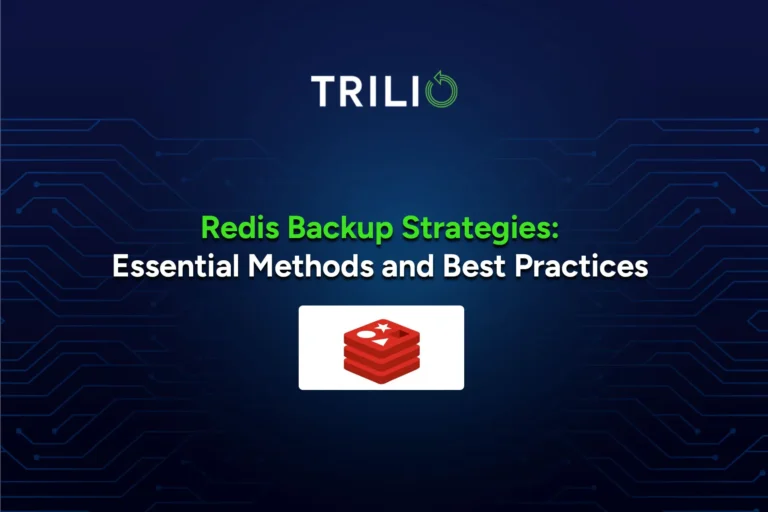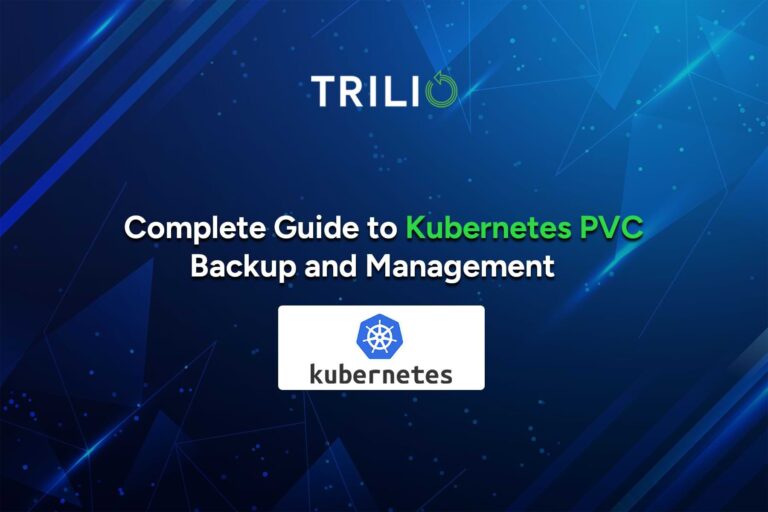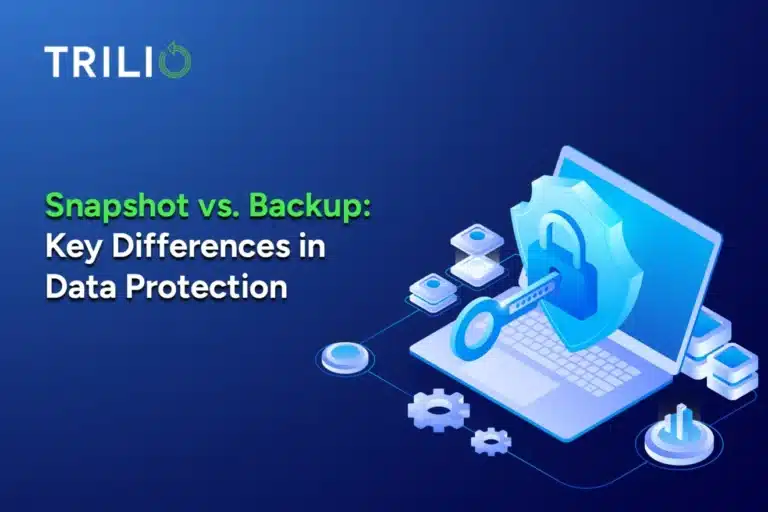The Evolving Landscape of Data Protection
Deciding between on-premises and cloud-based backup and disaster recovery solutions is a critical step for organizations managing hybrid IT environments. A recent Gartner report forecasts that the global public cloud services market will reach an impressive USD 1.1 trillion by 2027, with a CAGR of 19.6%. This significant projected growth, covering not just storage but all public cloud services, highlights the growing trend of using cloud-based data protection solutions. However, whether these solutions are a good fit depends on each organization’s specific needs and restrictions. This article offers a detailed comparison of on-premises versus cloud-based backup and disaster recovery solutions, providing you with the necessary insights to make the best choice for your hybrid IT environment.
Feature | On-Premises Solutions | Cloud-Based Solutions |
Initial Cost | High upfront investment for infrastructure | Lower entry cost, pay-as-you-go model |
Scalability | Limited, requires physical expansion | Highly scalable, adjust resources as needed |
Control & Security | High control, suitable for compliance requirements | Evolved security features, reliant on provider |
Flexibility | Less flexible, hardware-dependent | Highly flexible, suitable for varying demands |
Maintenance | Requires dedicated IT staff, ongoing maintenance | Maintained by provider, less hands-on management |
Recovery Speed | Dependent on physical infrastructure | Rapid recovery capabilities |
Technological Integration | Custom integration required | Seamless integration with modern technologies like Kubernetes, OpenStack |
Examples of Solutions | VMware Site Recovery Manager, Veeam Backup & Replication | AWS Disaster Recovery, Azure Site Recovery, Google Cloud’s Disaster Recovery, Trilio for Kubernetes & OpenStack |
On-Premises vs. Cloud-Based Backup and Disaster Recovery Solutions: A Detailed Comparison
On-Premises Solutions: Traditional Control
Disaster recovery and backup solutions on your own site provide a degree of control that’s crucial for organizations with strict compliance needs. This control is made possible through a variety of sophisticated solutions, including:
- VMware Site Recovery Manager: A disaster recovery solution for virtualized applications.
- Veritas Backup Exec: Known for its robust backup capabilities for data protection.
- IBM Spectrum Protect: Offers data backup and recovery for a wide range of environments.
- Veeam Backup & Replication: Provides backup, recovery, and replication functionalities for virtual environments.
For instance, Deutsche Bank, a prominent player in global banking, uses on-premises solutions to meet stringent financial regulatory compliance and data sovereignty. They leverage top-tier server technologies and advanced data center infrastructures to keep a close eye on sensitive financial data.
However, there’s a trade-off. Controlling everything can lead to increased capital and operational costs. On-premises solutions aren’t cheap. They require a hefty initial investment in infrastructure, plus the ongoing costs of maintenance and energy. To balance these challenges and inject some flexibility, companies like Deutsche Bank are gradually tweaking their strategies to include cloud solutions. This shift lets them tap into the scalability and cost-efficiency of cloud computing, while still keeping the security and control that on-premises systems offer.
Cloud-Based Solutions: Embracing Flexibility and Scalability
Cloud-based disaster recovery and backup solutions play a vital role for businesses focusing on quick and flexible recovery strategies. Notable solutions in this sector include:
- AWS Disaster Recovery: Known for AWS Elastic Disaster Recovery, minimizing downtime and data loss.
- Azure Site Recovery: Offers failover and recovery for both on-premises and cloud environments.
- Google Cloud’s Disaster Recovery: Features tools like Google Cloud VMware Engine for data protection.
- Trilio backup and recovery and disaster recovery tools for Kubernetes and OpenStack: A specialized solution providing robust, scalable disaster recovery tailored to Kubernetes and OpenStack environments, ensuring data integrity and rapid recovery.
Learn about the features that power Intellegent backup and recovery
Cost Implications: A Comparative Perspective
On-premises and cloud-based solutions have distinctly different cost structures. An on-premises solution demands a significant upfront investment in hardware, software, and infrastructure, which results in higher initial costs. These capital expenditures, or CapEx, cover aspects like data center space, power, cooling, and ongoing maintenance.
On the other hand, cloud-based solutions operate on a pay-as-you-go model, falling under operational expenditure (OpEx). This model trims down the upfront costs since businesses only shell out payment for the services they actually use. It gives them the flexibility to adjust resources as required. This works well for businesses with fluctuating demands, converting hefty capital expenses into more manageable operational costs.
Dell Technologies report highlights that 82% of businesses find scalability and cost-efficiency as key benefits of cloud-based backup solutions.
Security Considerations: A Dual Approach
Security is a critical factor in both on-premises and cloud-based data backup and disaster recovery solutions. While on-premises solutions offer greater control over security measures, cloud-based solutions have evolved to provide robust security features.
The U.S. Department of Defense has been using cloud solutions for certain non-classified data, demonstrating trust in the security capabilities of cloud-based solutions. They have implemented rigorous security measures to protect sensitive data.
Compliance: Navigating Regulatory Landscapes
Compliance plays a crucial role, particularly for industries under rigorous regulations. On-site data backup and disaster recovery solutions are generally attractive to organizations that need to maintain a strong handle on compliance issues.
Health insurance companies, like UnitedHealth Group, often opted for on-premises solutions to adhere to HIPAA regulations. This ensures that they have complete control over patient data and compliance with healthcare privacy laws.
Still, cloud-based solutions have come a long way in terms of compliance. Many providers now offer solutions that align with different industry standards.
Perform secure central application centric backup container, vms, helm & Operator
Used Pre-Stage snapshots to instantly test, transform and restore during recovery
Scale with fully automated policy-driven backup and recovery worklow
The Role of Trilio in Modern Backup and Disaster Recovery Strategies
Trilio for Kubernetes (T4K) showcases its capabilities in its deployment with Red Hat OpenShift and Red Hat Advanced Cluster Management (RHACM). As a cloud-native data protection platform, T4K is tailored to fit the scale, performance, and mobility needs of Kubernetes environments, be it in public or hybrid clouds. It offers top-notch backup and disaster recovery solutions for applications in their entirety, including their data, metadata, and Kubernetes objects. The combination of T4K with RHACM takes this a step further by providing an automated solution for protecting containers and Kubernetes infrastructure through a well-thought-out policy framework. This system allows for the management of multiple clusters across hybrid cloud deployments, promising solid protection for both current and future clusters.
Making the Right Choice for Your Organization
Wrapping up, picking between on-site and cloud backup and disaster recovery solutions hinges on a range of factors like cost, security, scalability, compliance, and tech integration. It’s crucial for organizations to evaluate their distinct needs, taking into account their present demands as well as future expansion.
Platforms like Trilio are ready to deliver powerful, adaptable, and efficient backup and disaster recovery features, aligning with the varied requirements of today’s businesses.




